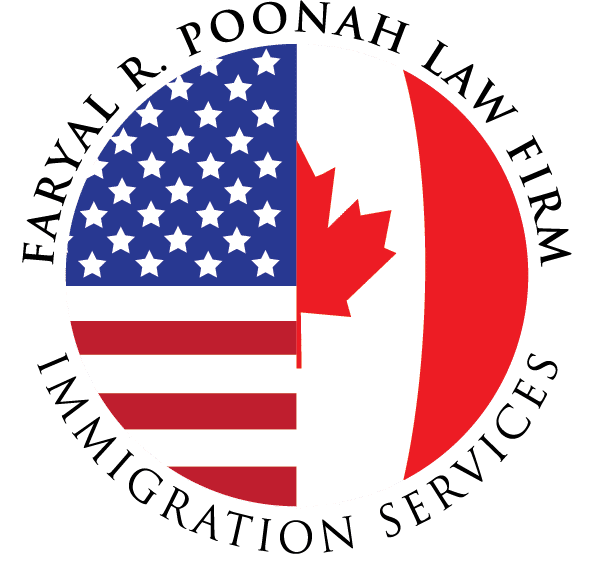Temporary Work Permits

Would you like to work in Canada? The Canadian government encourages bright and highly skilled individuals from around the world to apply for a temporary work permit. If you choose, you can apply for permanent residence after obtaining your temporary work permit.
Canada’s job market is ideal for foreign workers because, in most cases, you can enjoy higher wages and better working hours. To legally work in Canada, you must first obtain a work permit. When considering which foreign worker to admit into Canada’s workforce, the government must balance two factors: (1) the country’s need for highly skilled workers and (2) a need to protect its current workforce. This balancing test has led to a very complex employment mechanism that offers a number of pathways to work in Canada. These pathways include the following:
(1) Labour Market Impact Assessment (“LMIA”): An LMIA is an approval letter issued by The Employment and Social Development of Canada (“ESDC”). Your Canadian employer must obtain the LMIA on your behalf by demonstrating that there are no qualified Canadian workers available to fill the job position and that the foreign worker will be receive a salary and benefits based on federal and provincial standards. After receiving a positive LMIA, a foreign national may apply for a Canadian work permit.
(2) North American Free Trade Agreement (“United States-Mexico-Canada Agreement (USMCA)”): The United States-Mexico-Canada Agreement (USMCA) immigration pathway is applicable to American and Mexican citizens who need to expedite their entry into Canada as a skilled workers who is working intra-corporately. In other words, these foreign workers have specialized knowledge and need to be transferred to the foreign corporation’s Canadian subsidiary, affiliate or parent branch. This type of visa is granted to professionals with specialized knowledge or professionals who fall in the managerial or executive class. What makes United States-Mexico-Canada Agreement (USMCA) so expedient is that it eliminates the LMIA process via ESDC and enables foreign workers (after obtaining an offer from a Canadian employer) to apply directly for a work permit.
There are 4 categories of professionals who can take advantage of United States-Mexico-Canada Agreement (USMCA) expedient entry process:
- Business visitors
- Professionals
- Intra-company transferees
- Investors
(3) International Experience Class (IEC): The IEC work permit is a great way for students and young adults ages 18 – 30 to gain work experience in Canada. Canada’s relationship with many countries allows foreign students, young workers and young professionals to enter Canada for 1 – 3 years to gain Canadian work experience. Based on a quota system, the IEC permit also allows Canadian employers to hire applicants on a permanent basis (i.e., permanent residence) using one of several immigration pathways available to them.
(4) Work Permits for Students: For those students who would like to gain some work experience while furthering their education, a Student Work Permit allows them to do both. Under the Canadian Experience Class, students who are studying at an immigration-approved school are eligible for a work permit after 6 months of study. With their work permit, they are permitted to work part-time (up to 20 hours a week) during the school year and full-time during their summers.
Taking any of the above pathways will require the involvement of two government entities — the departments of ESDC and Immigration, Refugees and Citizenship Canada (“IRCC”). The Canadian work permit process is very complex, but our law firm welcomes an opportunity to help you navigate the complexities of this process so that you can immigrate to Canada quickly.
Do you have additional questions? If so, click the button below.
(5) International Mobility Program (IMP): The Francophone Mobility Program was introduced on June 1, 2016 in order to facilitate entry of skilled workers whose habitual language is French. The program is under the International Mobility Program (IMP) to support the development of minority official language communities as per the Immigration and Refugee Protection Act (IRPA).
Specifically, Francophone Mobility is a Labour Market Impact Assessment (LMIA) exemption code which removes the obligation for employers to obtain a positive LMIA usually required to hire temporary foreign workers. Francophone Mobility (C16) falls under the ‘Canadian Interests’ branch of exemption codes. The is an employer specific work permit, not an open work permit.
Criteria
There are several criteria that both the employer and potential applicant must meet.
For Applicants
- The foreign national may be any nationality
- No Age Limit
- Habitual language of daily use is French
- Employment is in a Province or Territory other than Quebec
- Meet the NOC Category 0, A or B
For Employers
- The employer must submit an offer of employment prior to the application being made, through the employer portal
- The first step on the employer portal is to click on “Create a Job Offer”
- There are four modules that must be completed, including:
- Job Details Section – Under the “LMIA Exemption Title”, select Francophone Mobility R2059(a)
- Under “Explanation of how the job meets the requirements of the exemption being requested”, provide details that the candidate is French-speaking, settling outside of Quebec and has been offered a skilled position
- The employer must pay an employer compliance fee of $230 (refundable if an application is refused)
- The employer must then return to the homepage and note the “Offer of Employment Number? and provide this number to the candidate so they can apply for the work permit
- Work permits must be classified as LMIA Exemption Code C16, so long as the foreign national is:
- destined to work in a province or territory outside of Quebec
- qualified to work in managerial, professional, technical or skilled trades occupations under the new 2021 NOC Code classifications(NOC 0, A or B)
Please note, if an employer fails to pay the compliance fee or submit an offer of employment, the application will be refused.
How to Apply
IRCC strongly recommends that an initial exemption code C16 work permit applications be submitted online or via a visa application centre (VAC) overseas.
Foreign nationals who are eligible to apply for a C16 work permit at a port of entry (POE) or from within Canada after entry should include their language results in their work permit application. If the applicant cannot satisfy an officer that they meet this eligibility consideration, the work permit application may be refused.
Is Testing a Mandatory Requirement?
While applicants who apply at a port of entry or from within Canada should include language results, those applying overseas through a VAC, or online, do not necessarily have to submit language testing results. The regulations state that an interview and/or language test will be required “where the officer is not satisfied that the foreign national’s habitual language is French”. Should language results be requested, applicants should demonstrate that they have obtained Niveau de compétence linguistique canadien (NCLC) of level 7 or higher in the Test d’Evaluation de Français (TEF) or Test de connaissance du français (TCF).
Therefore, once the officer is satisfied that the worker’s habitual language is French, their work permit will be classified as C16. The language of work does not have to be French.
Renewals
Applications to renew/extend exemption code C16 work permits should be submitted directly to IRCC online or to the Case Processing Centre in Edmonton (CPC-E). The initial guidelines must still be met, and the applicant must continue to be employed in applicable NOC 0, A or B occupations outside Quebec.
A reassessment of the French language is not required upon renewal of the work permit; however, the officer at the CPC-E still has the option to refer the case to a local IRCC office for further follow-up.
Duration
Officers may issue the work permit for a validity period of the duration of the offer of employment or until the expiry of the travel document or biometrics, whichever is earlier.
Family members
- Spouses and common-law partners accompanying exemption code C16 applicants to Canada may obtain an open work permit under the LMIA exemption code C41 without first having an offer of employment, so long as the principal worker
- holds a work permit that is valid for a period of at least 6 months
- physically resides or plans to physically reside in Canada while working
- Spouses and dependents are eligible for an open study permit if the principal applicant has obtained their initial work permit in writing before entering Canada.
- Minor children accompanying the children of the principal applicant may be exempt from the requirement to obtain a study permit. For guidance on specific requirements regarding obtaining a study permit for minors, see Study permits: Guidelines on minor children.
(6) United States-Mexico-Canada Agreement (USMCA)
United States-Mexico-Canada Agreement (USMCA) came into force on July 1, 2020 and replaced the North America Free Trade Agreement (NAFTA). Canada, the United States, and Mexico have the largest free trade region in the world and the strongest economic ties. The new Agreement creates more balanced, reciprocal trade for workers, farmers, ranchers and businesses, raising the standard of living and ensuring economic growth to the North American economy.
Under the USMCA, Mexicans and Americans can work in Canada, without a Labour Market Impact Assessment (LMIA) under the USMCA Professionals category. Under Chapter 16 of the USMCA, entitled “Temporary Entry for Business Persons”, a selected category of skilled occupations may access each other’s job market.
Categories of Businesspersons
Along with the requirement of being a citizen of the United States or Mexico, there are four categories depending on the type of worker:
- USMCA Professionals
- USMCA professionals must have a job offer in Canada in one of the 60 NAFTA occupations to work for a Canadian enterprise under a salaried job offer
- Must be in a profession identified in the NAFTA occupation list
- Must have a qualification to work in that profession (degree or certification in a related educational program)
- Must have pre-arranged employment with an employer in Canada, with a provision of professional-level services in the field of qualification
- LMIA exempt but requires a work permit
- USMCA Business Visitors
- Engage in international business activities related to research and design; growth, manufacture and production; marketing; sales; distribution; after-sales service; and general service
- Authorized to enter Canada for business purposes under R186(a) and can carry out their activities without the need for a work permit
- USMCA Traders / Investors
- USMCA Traders have the intent and ability to engage in “substantial trade” (more than 50% of international trade between Canada and, the United States and Mexico) of goods or services
- Substantial trade may be evidenced by transactions or volume being traded
- Employing Enterprise has a majority American and Mexican nationality
- The position must be supervisory, executive or involves specialized skills
- LMIA Exempt, but requires a work permit
- USMCA Investors must show that they have made a substantial investment in a new or existing Canadian business
- The investor must be coming to Canada solely to develop and direct the Canadian business
- An investor may be an employee, but the role must be executive, supervisory or require specialized skills
- The investor must show they have a controlling stake in the company through their title, position in the hierarchy of the business, job duties, etc.
- Employing Enterprise has a majority American and Mexican nationality
- The substantial investment must actively be made, or already made in Canada
- “Substantial” is the value of the investment weighed against the total value of the business, or the amount normally required for the type of venture
- LMIA Exempt, but requires a work permit
- USMCA Intra-company Transferees
- Employed by an American or Mexican enterprise in a managerial or executive role, or in one which involves specialized knowledge, and are being transferred to the Canadian enterprise, branch, or affiliate to provide similar services, or
- Opening a new office enterprise, branch, or affiliate in Canada and being transferred to perform managerial, executive or specialized work
- LMIA Exempt, but requires a work permit
- Provides for an initial entry of up to three years
How to Apply
- USMCA work permits are issued by the government of Canada under the International Mobility Program (IMP)
- Applications may be made online, at a visa office, or at a port of entry
- Americans do not require a visa to enter Canada
ASK AN IMMIGRATION ATTORNEY
Do not leave crucial decisions to chance. Allow an experienced Immigration Lawyer to skillfully guide you through the immigration process. If you have questions, we want to hear from you and answer your questions. Please submit your question below, and one of our legal professionals will respond to you soon.



